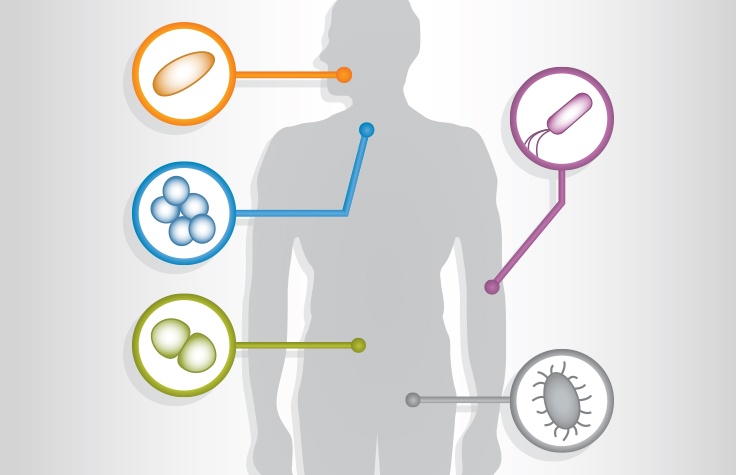
Scientists from the Icahn School of Medicine at Mount Sinai, Sema4, and collaborating institutions New York University and the University of Florida today published a report detailing their new, more accurate method for identifying individual microbial species and strains in a community. This technique has important implications for microbiome analysis, with potential long-term applications for clinical care. The paper came out today in Nature Biotechnology.
Microbiomes are communities of bacteria, viruses, and other microbes that can be found everywhere from the surfaces of keyboards and cell phones to environments on and within us, such as our mouths or intestines. Disruption of the natural microbiome has been implicated in health conditions including infectious diseases, cancers, and complex disorders such as Crohn’s disease, ulcerative colitis, and diabetes, among many others. Successful analysis of microbiomes depends on the ability to zoom in on these communities and identify the individual species and strains living within them.
To date, most techniques for identifying microbial members of these groups provide insufficient resolution. For example, a species might only be classified as part of its broader genetic family, rather than uniquely identified on its own. Existing methods are also not effective in the characterization of an important class of genetic materials that can shuttle between different bacterial species, known as mobile genetic elements.
In this new work, scientists used Single Molecule, Real-Time Sequencing technology and novel computational tools to classify microbes for the first time by analyzing both their genetic code and their methylation patterns, a second DNA code that regulates gene activity. This more comprehensive approach using long-read sequencing proved more precise than industry-standard protocols such as 16S sequencing or short-read sequencing, correcting errors and incomplete results in microbe identification generated by those methods. Importantly, the method provides a new way to link mobile genetic elements to their bacterial hosts, allowing scientists to more accurately predict the virulence, antibiotic resistance, and other biologically and clinically critical traits of individual bacterial species and strains.
“The biomedical community has long needed a microbiome analysis method capable of resolving individual species and strains with high resolution,” said Gang Fang, PhD, Assistant Professor of Genetics and Genomic Sciences at Mount Sinai, and senior author of the paper in a statement. “We found that DNA methylation patterns can be exploited as highly informative natural barcodes to help discriminate microbial species from each other, help associate mobile genetic elements to their host-genomes and achieve more precise microbiome analysis.”
In pilot projects using both synthetic and real-world microbiome samples, scientists were able to distinguish between even closely related species and strains of bacteria. They used methylation patterns to link related DNA sequence data, providing more holistic information about individual organisms. The team validated the method in low- to medium-complexity microbial communities, and is currently developing more advanced technologies to effectively resolve high-complexity communities such as environmental microbiomes.
“This project demonstrates the sophistication and power of analyzing many types of data together to yield insights that are not possible with more simplistic approaches,” said Eric Schadt, PhD, Sema4 CEO, Dean for Precision Medicine at Mount Sinai, and a co-author of the paper in a statement. “Biology is complex, and our analyses must accurately represent that complexity if we hope to eventually deploy this information for clinical use.”
Featured image use credit: Illumina

